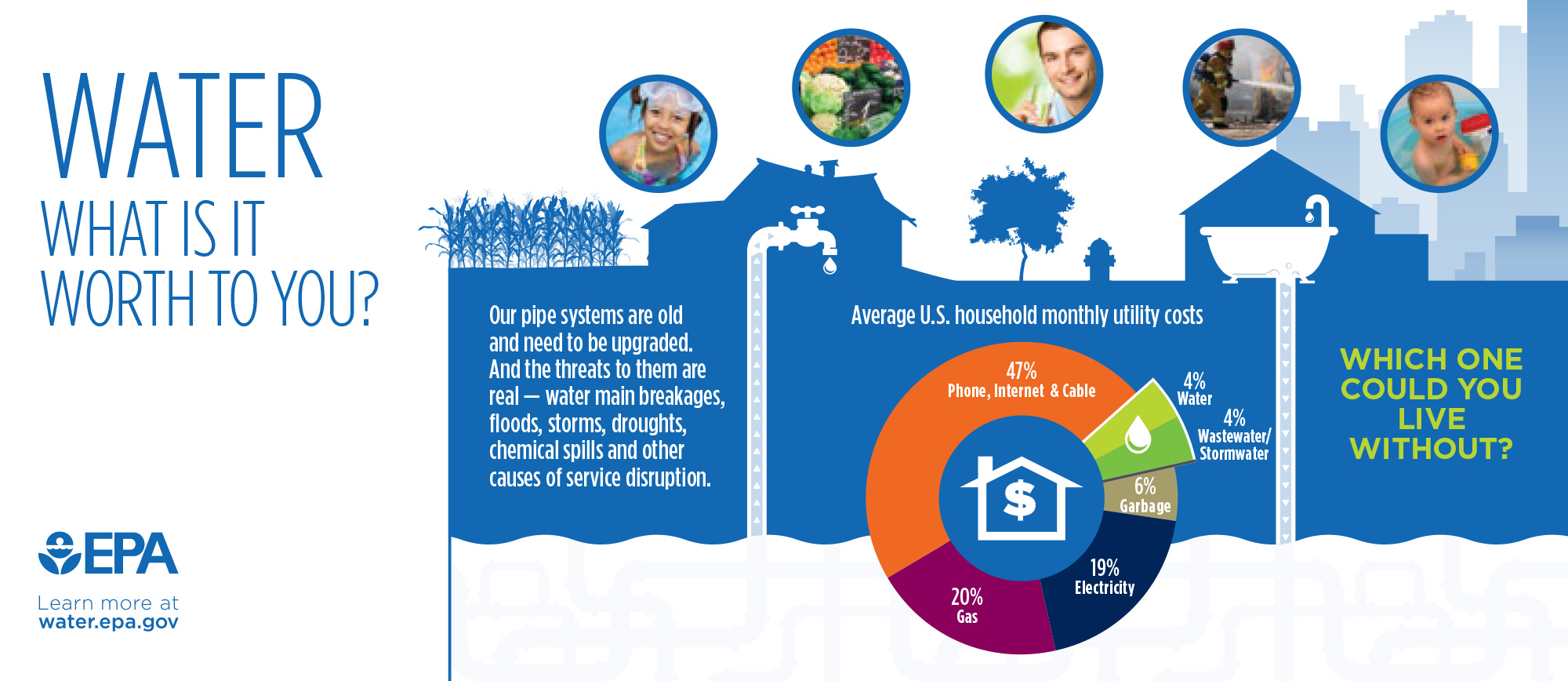Pools Pack a Punch on the Environment
Helpful tips to download and distribute in your community (Download PDF)
For many across the U.S., respite from the hot days of summer means a dip in the pool. Whether it’s a large, bustling community pool or your own backyard pool, either in ground or above ground, the environmental impact of your refreshing swim might surprise you.
A modest, above ground pool requires 8,000-15,000 gallons of water to fill. Expect to triple that amount if you opt for an in ground backyard oasis. The average community pool requires more than 200,000 gallons of water to keep swimmers afloat. To put that in perspective, your 8-minute shower uses about 17 gallons of water.
The environmental cost of one of our favorite summer pastimes goes beyond the sheer volume of water required. The chemicals, most notably chlorine, needed to maintain the pool also can also wreak havoc. Chlorine is often used to treat drinking water, making it safe for consumption, but the amount used in swimming pools, mixed with the amount of exposure time can have adverse effects. Too much pool time can cause asthma, lung irritation and even skin and eye irritation. When draining chlorinated pools, special care must be taken to ensure waterways are not polluted with chemicals. The biggest danger is when chlorine mixes with sweat, lotions, and yes, even urine. This is what causes the irritated skin and red eyes in pool goers.

TIPS
So how can you enjoy the pool and limit the impact on the environment?
- Start by covering your pool when it’s not in use to minimize evaporation. This will reduce the need to replenish water throughout the season. Even leaving the pool covered a couple extra weeks each year can have a significant water savings.
- Limit your pool water exposure or frequency of pool use and always shower before and after swimming. The shower before swimming can reduce the chemical interactions that cause skin and eye irritation. And also, don’t pee in the pool.
- Be sure you know and follow your local requirements for draining your pool. The lakes, rivers and wildlife will thank you.


